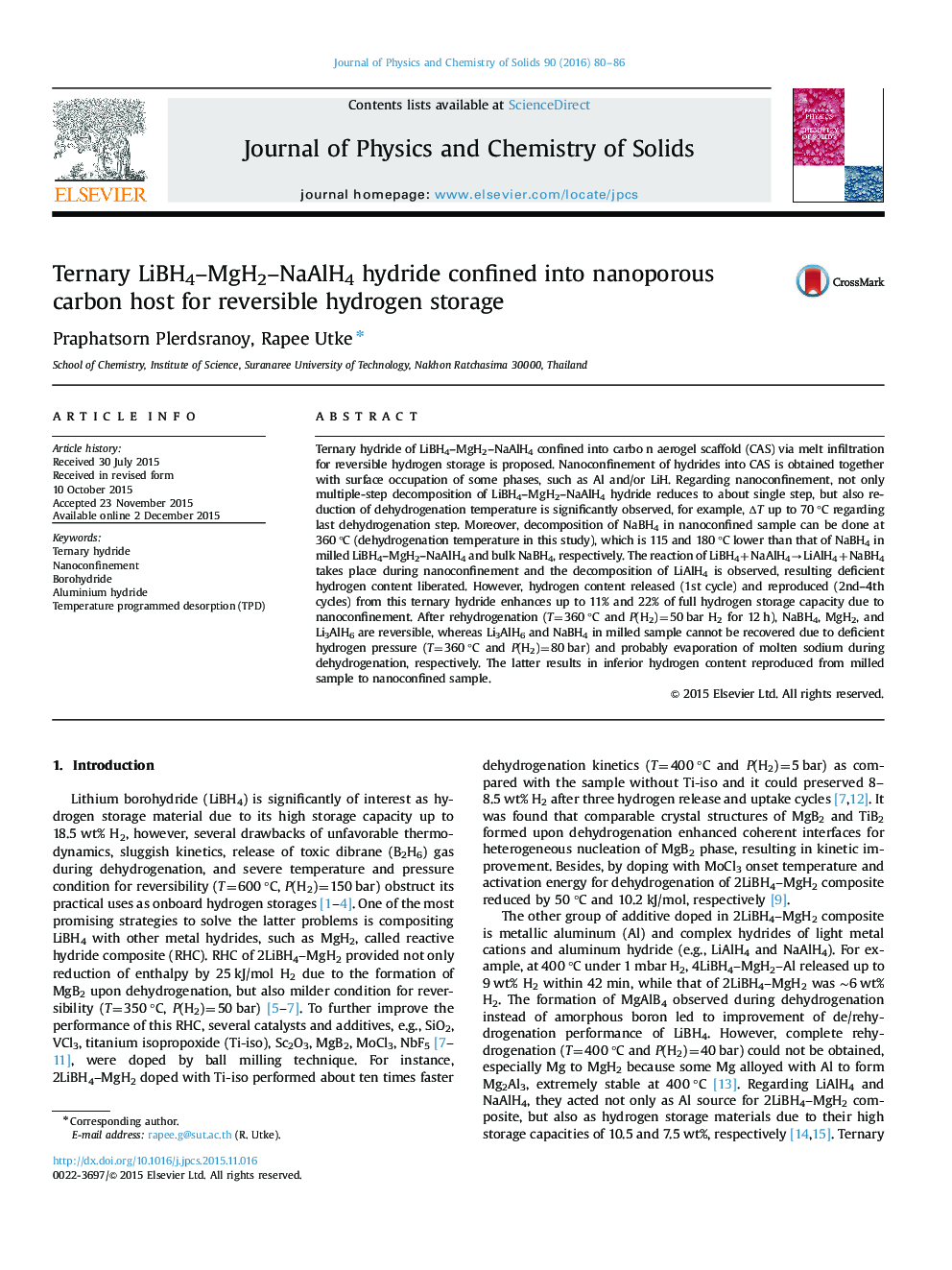| کد مقاله | کد نشریه | سال انتشار | مقاله انگلیسی | نسخه تمام متن |
|---|---|---|---|---|
| 1515400 | 1511515 | 2016 | 7 صفحه PDF | دانلود رایگان |

• First time report on nanoconfined LiBH4–MgH2–NaAlH4.
• Alteration of dehydrogenation from multi- to be single step after nanoconfinement.
• Reduction of dehydrogenation temperature (ΔT up to 70 °C) after nanoconfinement.
• 69% and 55% H2 released and reproduced from nanoconfined samples after 4 cycles.
Ternary hydride of LiBH4–MgH2–NaAlH4 confined into carbo n aerogel scaffold (CAS) via melt infiltration for reversible hydrogen storage is proposed. Nanoconfinement of hydrides into CAS is obtained together with surface occupation of some phases, such as Al and/or LiH. Regarding nanoconfinement, not only multiple-step decomposition of LiBH4–MgH2–NaAlH4 hydride reduces to about single step, but also reduction of dehydrogenation temperature is significantly observed, for example, ∆T up to 70 °C regarding last dehydrogenation step. Moreover, decomposition of NaBH4 in nanoconfined sample can be done at 360 °C (dehydrogenation temperature in this study), which is 115 and 180 °C lower than that of NaBH4 in milled LiBH4–MgH2–NaAlH4 and bulk NaBH4, respectively. The reaction of LiBH4+NaAlH4→LiAlH4+NaBH4 takes place during nanoconfinement and the decomposition of LiAlH4 is observed, resulting deficient hydrogen content liberated. However, hydrogen content released (1st cycle) and reproduced (2nd–4th cycles) from this ternary hydride enhances up to 11% and 22% of full hydrogen storage capacity due to nanoconfinement. After rehydrogenation (T=360 °C and P(H2)=50 bar H2 for 12 h), NaBH4, MgH2, and Li3AlH6 are reversible, whereas Li3AlH6 and NaBH4 in milled sample cannot be recovered due to deficient hydrogen pressure (T=360 °C and P(H2)=80 bar) and probably evaporation of molten sodium during dehydrogenation, respectively. The latter results in inferior hydrogen content reproduced from milled sample to nanoconfined sample.
Journal: Journal of Physics and Chemistry of Solids - Volume 90, March 2016, Pages 80–86